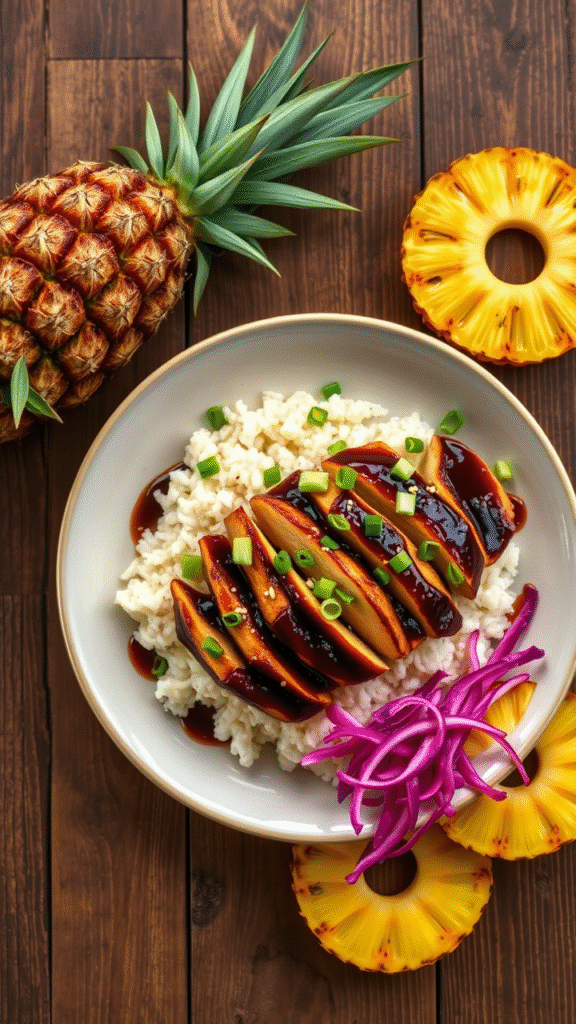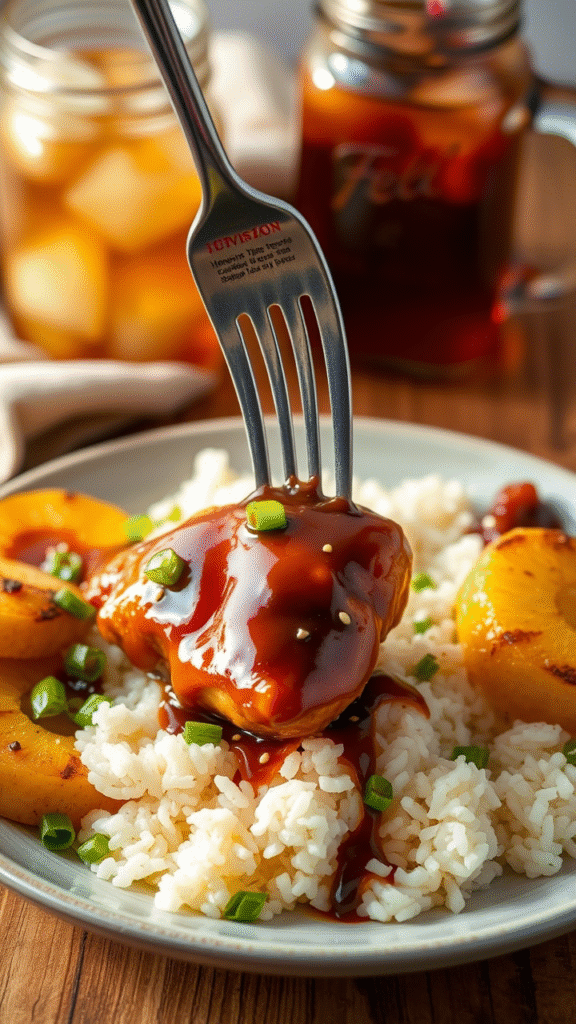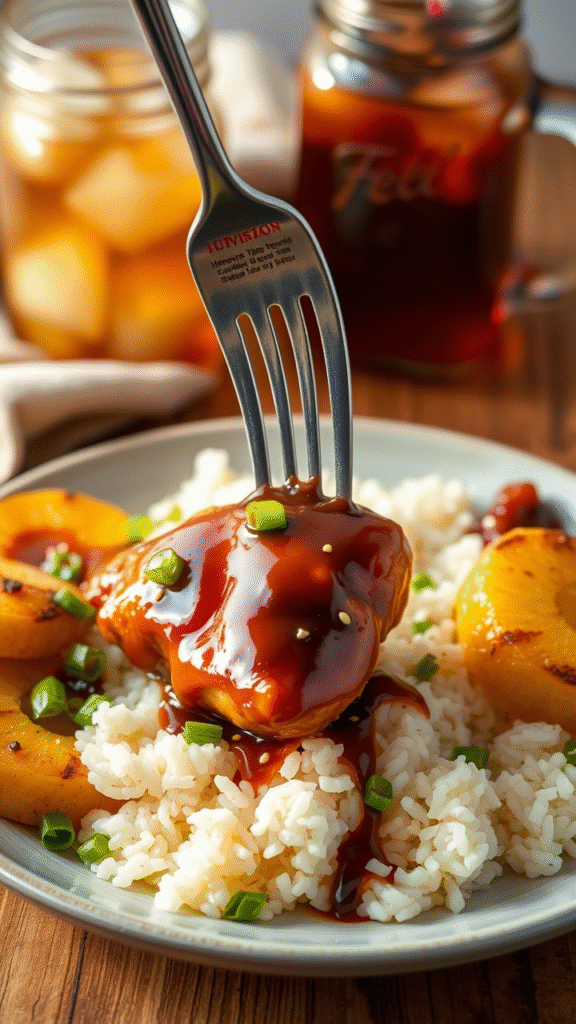I remember the first time I had Hawaiian teriyaki chicken. I was standing barefoot in someone’s backyard on the North Shore, holding a paper plate sagging under a mountain of grilled chicken and two scoops of rice. Some guy named Kalani handed it to me with a shaka and said, “You’ll never eat teriyaki the same again.” He was right. I haven’t.
There’s something unreasonably addictive about Hawaiian teriyaki chicken. It’s not Japanese, not exactly. Not American either. It’s island food. Cookout food. Beach cooler food. Something people slap on the grill while aunties laugh and kids run around with juice-stained shirts. And unlike a lot of “teriyaki” you’ll find in mainland takeout joints—that weird, gloopy bottled sauce—Hawaiian-style teriyaki is straight-forward. Homey. Honest.
Let’s dig in. This isn’t just a recipe, it’s a slice of local flavor with a marinade that’s been passed around backyards and tailgates for decades. And if you get it right, that caramelized edge on the chicken? Unreal. You might just eat the skin before it hits the plate.
What is Hawaiian Style Teriyaki Chicken, Really?

Hawaiian-style teriyaki chicken is marinated, grilled boneless chicken thighs—simple as that. The marinade is where the magic lives. It’s soy sauce-based, but where Japanese teriyaki might lean delicate or glossy, the Hawaiian version is bolder, sweeter, sometimes with ginger and garlic, sometimes not. It’s flexible. It’s meant for sharing.
The secret’s in the char. That grill transforms the sugar and soy into dark, sticky edges that are impossible to fake on a stovetop. You want bits of blackened caramel. You want skin that crackles, meat that stays juicy. If you’re doing it right, the marinade should make the chicken taste almost candied, but still savory, not cloying.
This dish shows up at baby luʻaus, potlucks, high school grad parties, Friday pau hana… it’s part of life in Hawaiʻi. So let’s cook it right.
Ingredients & Substitutions
Here’s the core of it. No weird stuff, just well-chosen basics. The ingredients are humble, but each one matters.
- Boneless skin-on chicken thighs – thighs stay juicy on the grill. Skin gives that perfect blistery texture. Don’t swap for breasts unless you’re okay with it drying out (and if you do, pound them flat first).
- Aloha shoyu – this isn’t Kikkoman. It’s sweeter, rounder. Use it if you can. If not, a low-sodium soy sauce mixed with a dash of sugar gets close.
- Brown sugar – light or dark works. Dark gives a richer molasses note.
- Fresh garlic – grated, not chopped. Big pieces burn fast on the grill.
- Fresh ginger – again, grated. If you must, use powdered, but you’ll miss that sharp floral kick.
- Green onions – optional, but they add brightness. Slice thin.
- Sesame oil (optional) – just a dash. It adds toastiness.
- Pineapple juice (optional) – some folks swear by it. Adds tang and tenderizes. I like it, in small amounts—don’t overdo or it tastes like dessert.
- Mirin (optional) – gives that gentle acidity and umami. You can skip it or sub with a splash of rice vinegar + sugar.
Gluten-free? Use tamari or coconut aminos.
Low sugar? Cut the brown sugar in half, but expect a less sticky glaze.
Vegetarian? Try this marinade on tofu or mushrooms. Not traditional, but still bomb if grilled right.
Step-by-Step Instructions
1. Make the marinade.
In a big bowl or zip-top bag, mix 1 cup Aloha shoyu, ¾ cup brown sugar, 1 tbsp grated garlic, 1 tbsp grated ginger, and 2 chopped green onions. Optional: 2 tbsp pineapple juice and a splash of sesame oil. Stir ‘til the sugar’s dissolved.
Pro tip: Stir until it stops feeling gritty. Sugar that’s not dissolved won’t caramelize evenly later.
2. Marinate the chicken.
Drop in 2–3 pounds of boneless, skin-on chicken thighs. Make sure every piece is coated. Cover and refrigerate at least 6 hours, preferably overnight. Flip it once or twice if you remember.
Don’t shortcut this. Two hours isn’t enough. You want that soy and sugar to soak deep.
3. Preheat your grill.
Charcoal if you can, gas if you must. You want medium-high heat—around 400°F. Oil the grates lightly to prevent sticking.
4. Grill it.
Lay the chicken skin-side down. Let it sit for 5–7 minutes. Don’t move it around or press it—just let it char. Flip when the edges darken and release easily. Cook another 5–6 minutes.
Watch for flare-ups. Sugar burns fast. If you see flames, shift the meat.
5. Check for doneness.
Internal temp should hit 165°F. Let it rest a couple minutes before slicing. If you want that saucey finish, you can brush on a little extra marinade in the last minute or two—but only if you’ve boiled it first.
Cooking Techniques & Science

Let’s talk marinade science for a second. The soy sauce adds umami through glutamates. Sugar does more than sweeten—it encourages the Maillard reaction, that browning that creates savory depth. Ginger and garlic? They bring enzymatic action and aroma, and together they help cut through the fat of the chicken thigh.
Why boneless, skin-on thighs? Bone-in takes longer to cook and doesn’t absorb marinade as well. Skinless misses that gorgeous crispy char. So: boneless + skin-on = best of both worlds.
Don’t skip the rest after grilling. That 5 minutes lets juices redistribute. Slice too early and you lose moisture.
And grilling isn’t just a cooking method—it’s a flavor maker. That hot metal grate, the open flame, the charred drips—these create textures and tastes you simply cannot replicate in a pan. You’d have better luck microwaving a croissant.
Serving & Pairing Suggestions

Traditionally, you’re looking at a plate lunch setup:
- 2 scoops white rice
- 1 scoop mac salad (elbow mac, mayo, a dash of milk, maybe tuna or grated carrot)
- And a generous helping of teriyaki chicken, sliced thick
For a more refined plate:
- Serve over furikake rice with a soft-boiled egg
- Add grilled pineapple rings on the side
- Pair with a cold beer, lychee soda, or even a dry Riesling
Presentation tip: slice the chicken on the bias, drizzle with reduced marinade (if boiled), and scatter chopped green onions over top. Serve hot or room temp—it’s forgiving like that.
Conclusion
Hawaiian-style teriyaki chicken isn’t fancy. That’s the point. It’s backyard food. Family food. The kind of dish that doesn’t need a garnish to impress. You just need solid ingredients, a good soak in marinade, and a hot grill.
When done right, it’s deeply savory, a little sweet, kissed with smoke and flame. The char is everything. The thigh meat stays juicy. And when that sticky sauce clings to your fingers, that’s when you know it’s real.
My final tip? Make extra. Like, double. It disappears faster than you’d believe. And cold, straight from the fridge? Still incredible.
FAQs
1. Can I cook Hawaiian teriyaki chicken in the oven or stovetop?
Yes, but the results won’t be the same. Use a cast iron pan or broil it, but expect less caramelization. Grilling isbest for flavor.
2. Is there a vegetarian version?
Definitely. Use the same marinade on grilled tofu, portobello mushrooms, or even tempeh. Let them marinate longer to soak up the flavor.
3. What’s the difference between Hawaiian teriyaki and Japanese teriyaki?
Japanese teriyaki usually involves a glaze made of mirin, soy sauce, and sugar, cooked down. Hawaiian-style uses a marinade that’s bolder, sweeter, and typically grilled rather than basted.
4. Can I freeze the marinated chicken?
Yes. Freeze it raw in the marinade. Thaw overnight in the fridge and cook as normal. It actually intensifies the flavor.
5. What’s the best cut of chicken to use?
Boneless, skin-on thighs are ideal. They absorb marinade well and stay juicy on the grill. Avoid breasts unless they’re pounded thin and cooked carefully.

Food lover, recipe creator & the heart behind NoshCrafters.com. Olivia shares mouthwatering, easy-to-make dishes that turn everyday meals into unforgettable bites. When she’s not experimenting in the kitchen, she’s busy plating up inspiration for home cooks everywhere.